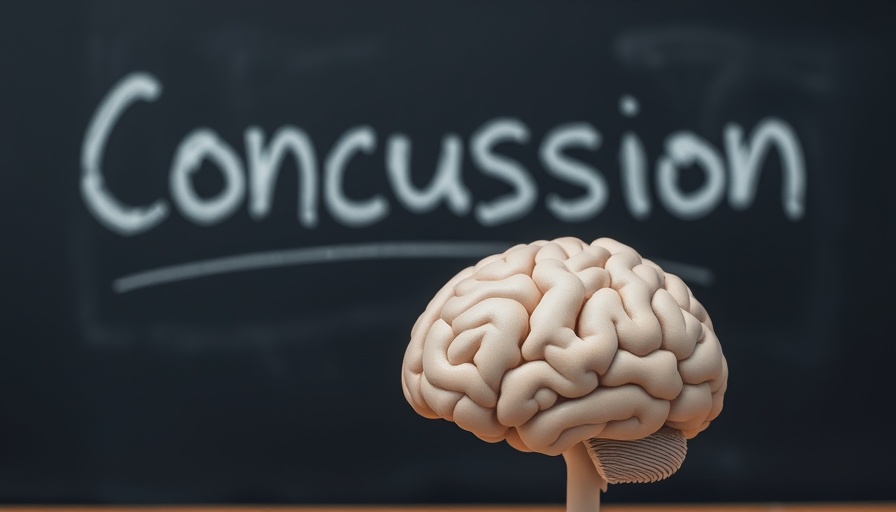
The Hidden Toll of Concussions on Youth Mental Health
In recent research, a concerning trend has emerged highlighting the susceptibility of young individuals experiencing concussions to increased suicide risk. A significant longitudinal study involving over 400,000 adolescents revealed that those diagnosed with concussions face more than a 60% heightened risk of suicide compared to peers with orthopedic injuries. As youth sports participation surges, this new data calls for immediate action in addressing mental health in students recovering from concussions.
A Sobering Study Sheds Light on Suicide Rates
The recent findings, published in the American Journal of Preventive Medicine, indicate a staggering statistic: adolescents diagnosed with concussions exhibited a suicide risk hazard ratio of 1.65, revealing a troubling correlation between head injuries and mental health challenges. Out of 271 suicides documented during the study period, 42 occurred within the concussion group alone.
Unraveling the Connection Between Concussions and Suicidality
As the links between concussion and suicidality unravel, it becomes critical to explore the implications for prevention strategies. The study echoes prior research suggesting that sustaining a concussion – often a common injury in sports – can trigger or exacerbate underlying mental health issues such as depression among youth. This intersection of physical and mental health paints a complex picture where concussions are not merely physiological events but substantial psychological stressors as well.
The Need for Targeted Interventions
Given the findings indicating that each additional concussion increases suicide risk, it's clear that targeted interventions for students with concussions are paramount. Approaches in telemedicine could serve as a valuable bridge, providing essential monitoring and emotional support for affected adolescents. Messaging around mental health needs to shift so that care for brain injuries includes mental health assessments as routine protocol.
Incorporating Lessons from Existing Research
Research assessing high school students in the U.S. affirms a similar sentiment: concussed adolescents showcased a higher incidence of suicidal ideation and behaviors. After controlling for factors such as substance use and depression, boys still maintained a notable correlation between concussions and suicide attempts. These insights stress that male students should receive tailored attention in assessments and interventions.
Protecting Our Youth: The Role of Sports and Education
As a community, we must bolster our initiatives in education and sports to ensure safe environments. With the rising acknowledgment of “concussion culture,” engaging in preventive measures, education about concussions, and comprehensive mental health training for coaches and educators will be crucial. Moreover, fostering supportive atmospheres where young athletes can express concerns and utilize mental health resources without stigma will empower them to seek help.
Conclusion: A Call to Action for Parents, Coaches, and Legislators
The healthcare landscape for young athletes must transform in light of these findings. Parents, coaches, and school administrators are encouraged to advocate for mental health support in conjunction with physical rehabilitation. Together, investing in the future of our youth means not only safeguarding their physical health but effectively nurturing their mental resilience.
 Add Row
Add Row  Add
Add 




Write A Comment